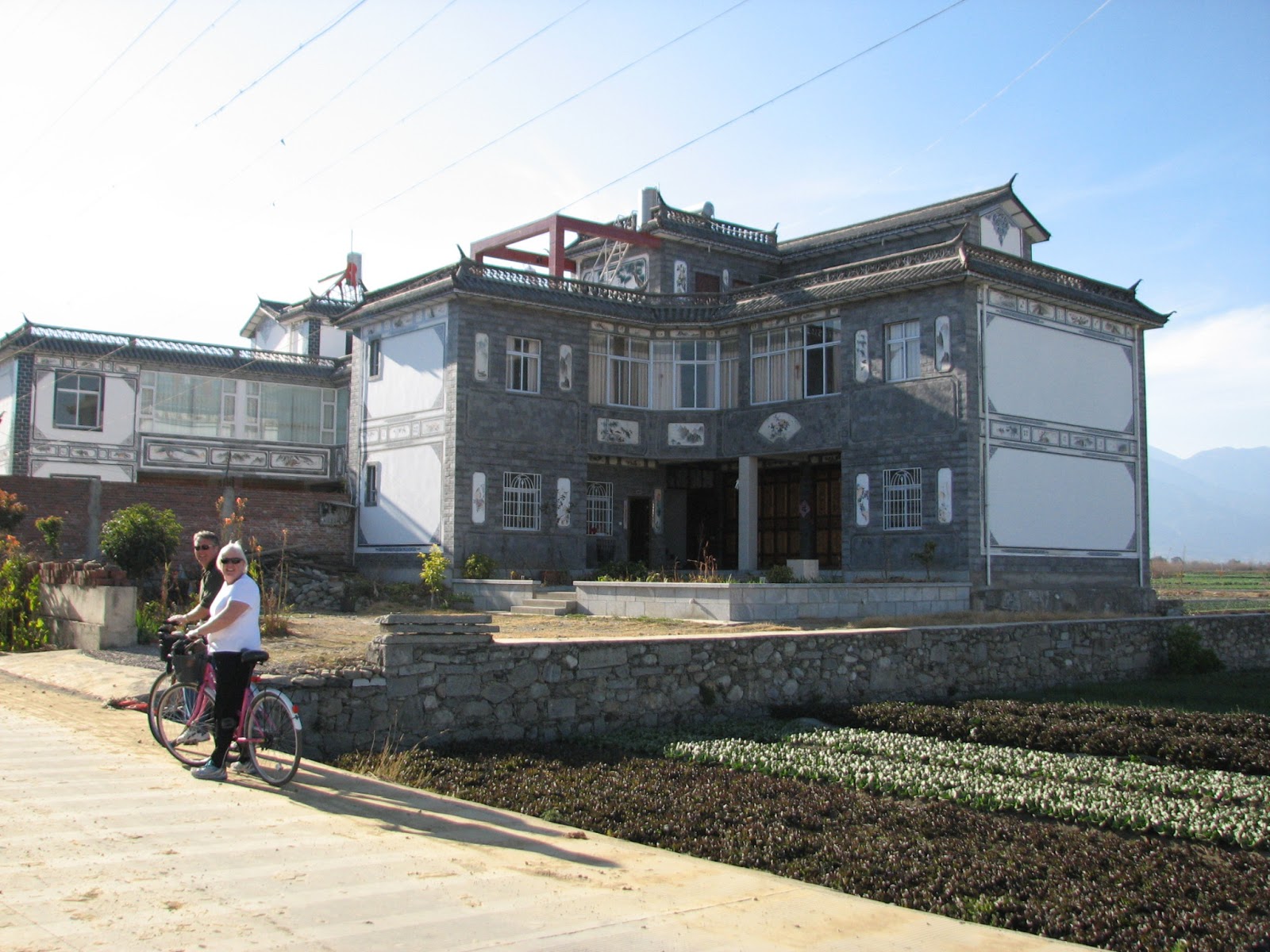The temple was commissioned by Wu San Gui, a worthy Chinese generalissimo. His huge sword and spear were on display as well. He was strong!
 |
| A good-looking man, Wu San Gui. |
His concubine was said to be so beautiful that she would rival Helen of Troy. Here she is.
 |
| The concubine is the statue in the pond--ha, ha! |
 |
| 3D dragon in the roof |
Outside, the smell of incense fills the air and there are beautiful gates, sculpture and gardens around the temple.
 |
| Incense |
 |
| So cute! |
There are many replicas of bronze sculptures from all over China on display here.
The lions or dragons who stand sentinels in front of Chinese buildings to protect them from evil and bring luck and prosperity are male and female. The male is on the right with a round ball under his paw representing the union of heaven and earth. The female has a cub under her paw, usually upside down in a playful position. She guards the cub just as she guards the building she's in front of. I really liked this statue because the cub is not underneath her paw! I think the other pose doesn't look as playful. This is the only time I've seen one this way.
Also nearby was a 40-ton bronze bell in a large tower that dates from 1416AD and is the 4th largest in China. Wish I could have rung it! Maybe you would have heard it!!
 |
| Bell tower |
 |
| Grandma and Granddaughter |
 |
| Grandpa and Grandson playing cards |
Yuantong Temple is atypical because it is not on a mountaintop, and when going through the different halls, you go downhill instead of climbing up. There were many beggars, mostly crippled, waiting for us out front. Wish I could help them all. Although small compared to what we've see elsewhere, Yuantong Temple is the largest Buddhist complex in Kunming and it is over 1000 years old. There is a lot of renovation going on, but it has a much more intimate feel to it than most we've visited. It is called a "Museum of Buddhism" because all the different factions of Buddhism are represented here.
This Buddha is holding his sword up in a defensive position. That tells all traveling monks that this is not a place where they are welcome to eat and take lodging. I guess because it was in a major population location, it overwhelmed them to have visitors. I thought it was interesting that the statute gives that message.
 |
| There's a "moat" around this temple, but it's dry for renovations. |
 |
| Wooden-carved dragons--sweet! |
 |
| My offering of incense |
 | |
| Pretty stone bas relief |
Another unusual thing about this temple complex was the animals we saw. There was a flop-eared rabbit, a couple of cats, turtles, white doves, and of course, gold fish in the ponds.
 |
| The turtles are on a rock in the pond, with goldfish swimming around them. |
 |
| My grandson, Luke, wants this bunny! |
 |
| These are mushroom, but they also added chicken and other vegees. |
In the lobby was this beautiful furniture, and a golden "yuan bao", the ancient Chinese coin. Everyone's getting ready for Spring Festival.
The most entertainment we got all day was when the bus took us to our downtown hotel. It was on the narrow intersection of a crowded street, and the bus just stopped kitty-corner in the middle of the intersection and we got off and unloaded our luggage from the bottom while the drivers all had to wait. We had 42 people on our bus! It was an "only in China" moment!
 |
| There's a driver in that white car, just waiting...... |
 |
| That's our hotel, The New Era Hotel, on the corner. |
There was a beautiful stained glass window in our hotel lobby.
Next stop: Hanoi, Vietnam






























































































